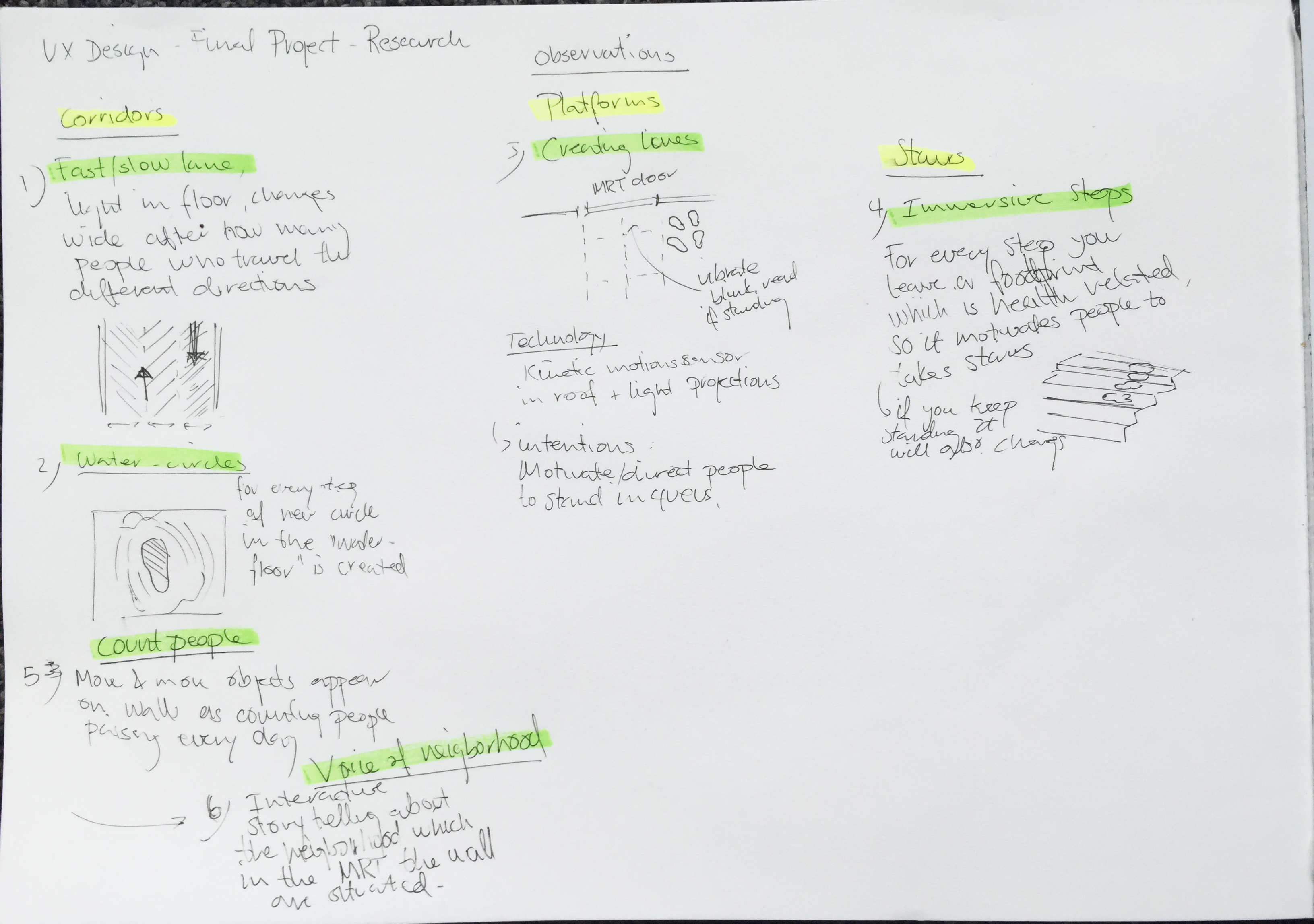This week we etablished groups to work on the final project; Creating a user experience.
Beforehand, I had prepared different refined ideas of how to activate dead spaces in the MRT as shown below:
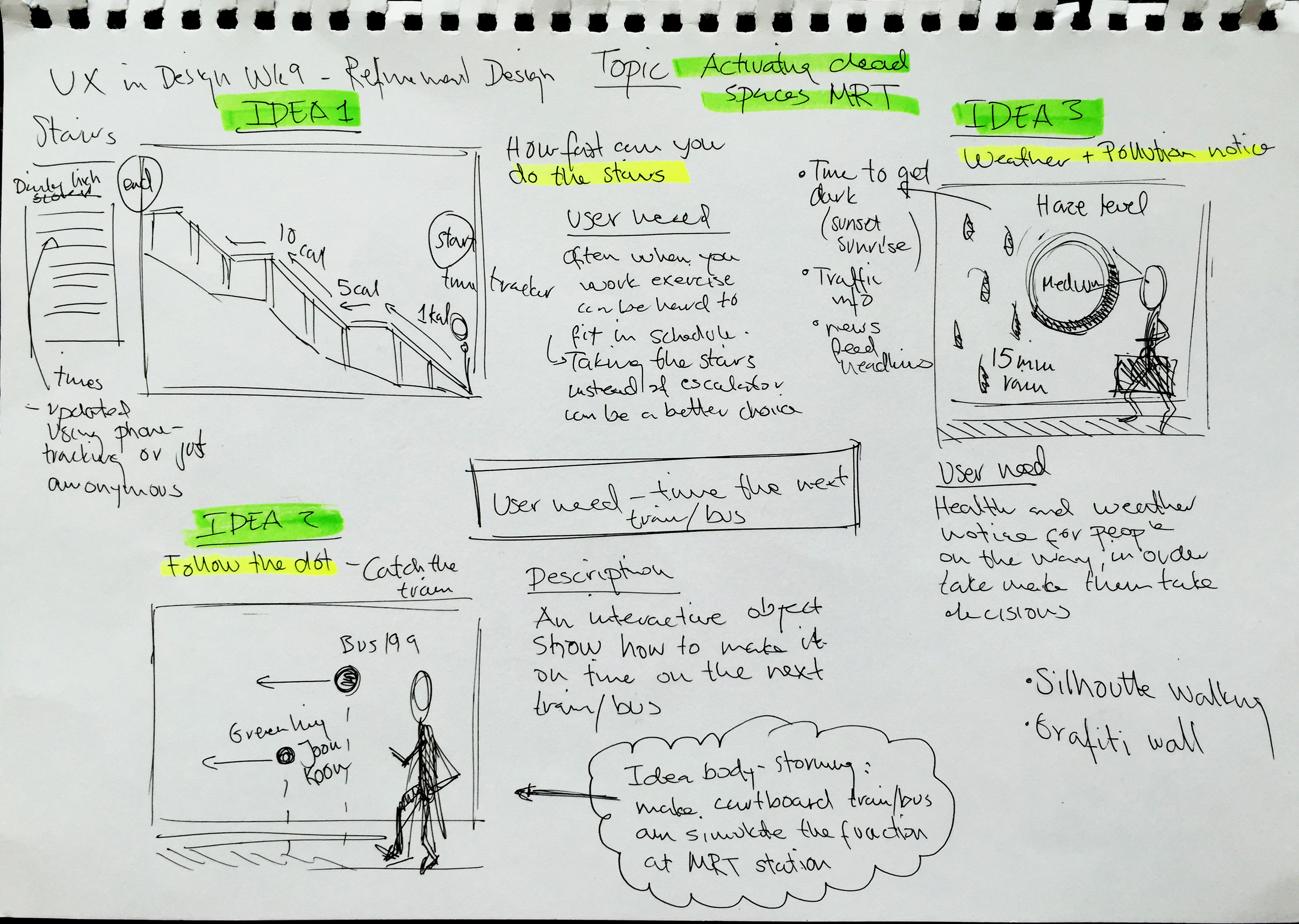
Also in our group for the last project we decided to work with activating spaces in MRT stations where we localized three possible main areas where we can to create an user experience in:
- Platform (gameplay)
- Stairs (gameplay/encourage use)
- Corridors (immersive environment)
For the different areas we further discussed what kind of user experience which could be relevant in the given area as shown above. Herafter we planned to do some individual research on the topic:
Research: Activating dead spaces MRT
Below you’ll find examples of different surfaces in various MRT station where the possible user experience can be integrated:
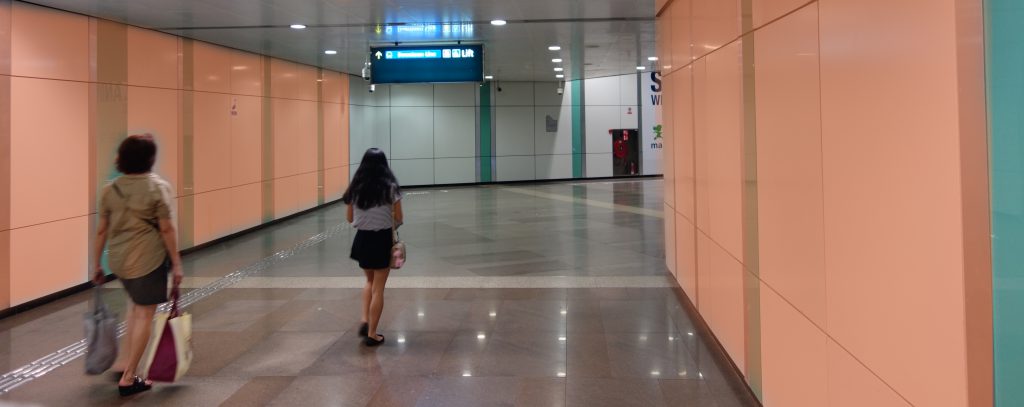
Research, Dead spaces, User Experience, Final project
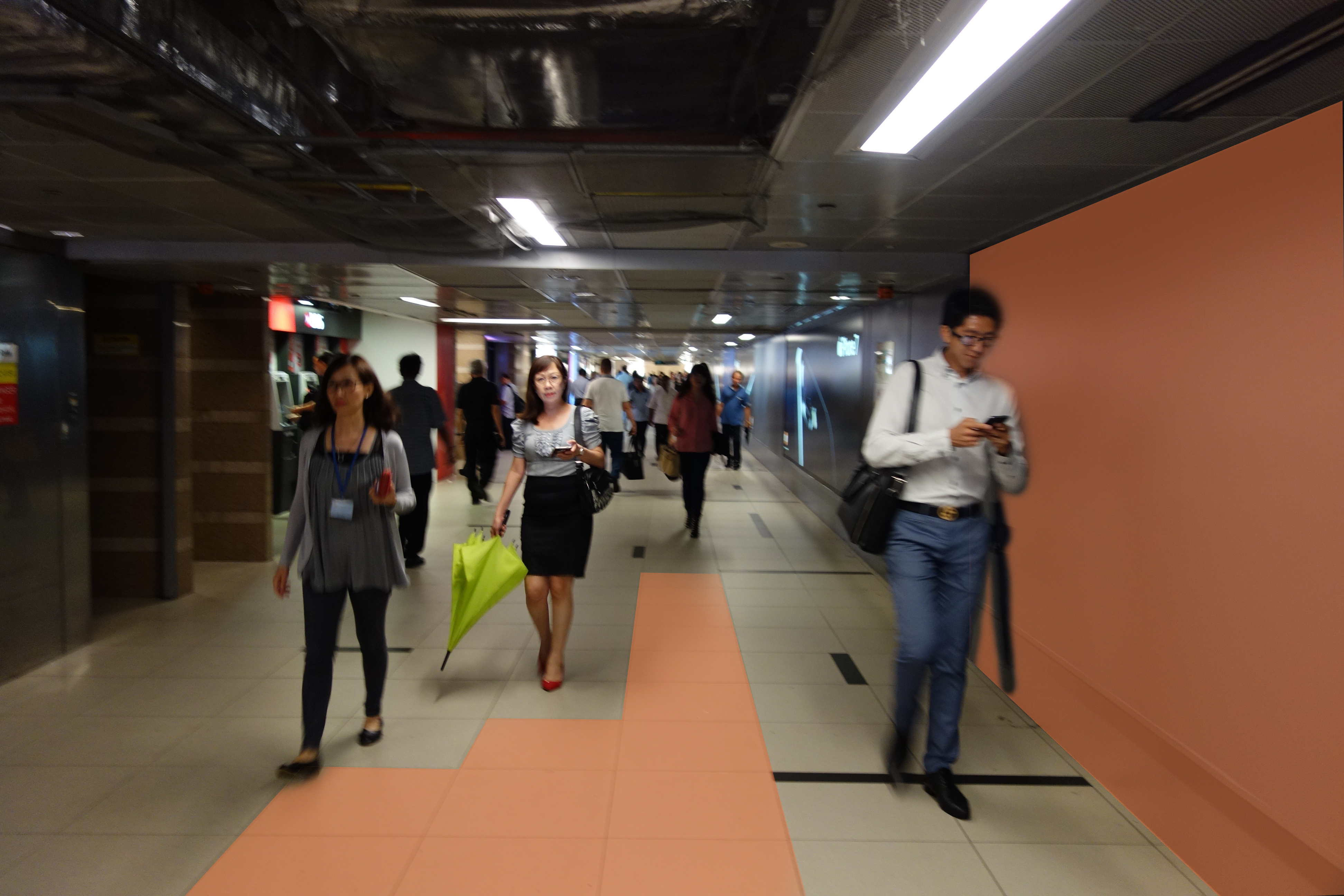
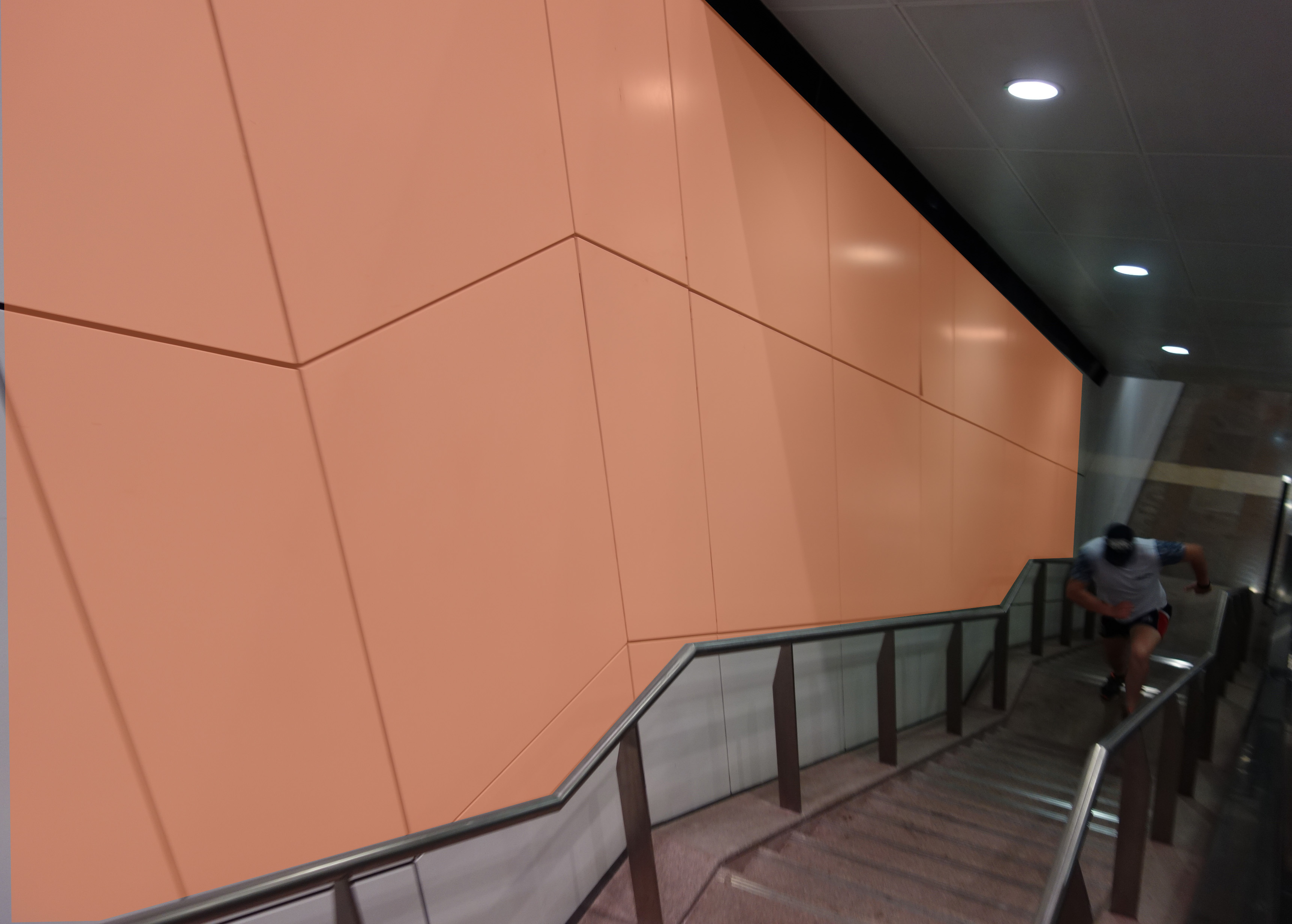
Finding from the research in MRT
People is often in hurry when they get from A to B. Furthermore I discovered that they often uses their mobile phones when they are on their ways.
At the platform people tend to stand in queues but on the same time it was observed that some people stand in front of the door and rush in (assumed to get a seat first).
Location is different and this also the different MRT’s layout.
Movements
It was observed that people tend to have different walking speed which can have a negative influence during peak hours.
Possible technology
Below you find different examples of how to use different technologies to create a user experience on different surfaces and locations:
ps://www.youtube.com/watch?v=g6N9Qid8Tqs
Further iterations: Designing User Experience by activating dead spaces
Below you find new sketches/descriptions of different ideas regarding activating dead spaces in the MRT conducted after done more research in the MRT:
